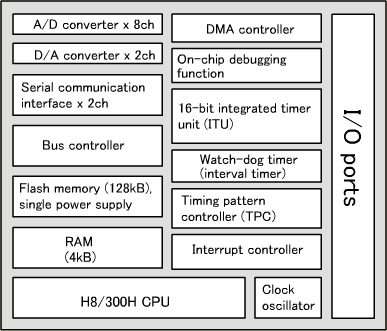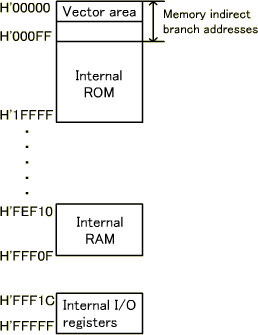In this course, an H8/3048 is used as the sample processor from the H8/300H family.The H8/3048 includes the following three types: one having a mask ROM or OTPROM as an internal ROM (simply referred to as the H8/3048), an H8/3048F having an internal writable flash memory with two power supplies (5V and 12V) and an H8/3048F-ONE having an internal writable flash memory with a single power supply (5V). The only difference among them is the type of internal ROM, the rest are almost the same. Although this chapter describes the overview of the H8/3048F-ONE, the descriptions in this and following chapters are common to all types. Note, however, that the training board has been developed based on the H8/3048F-ONE.
Figure 3.3 shows the H8/3048F-ONE internal block.

